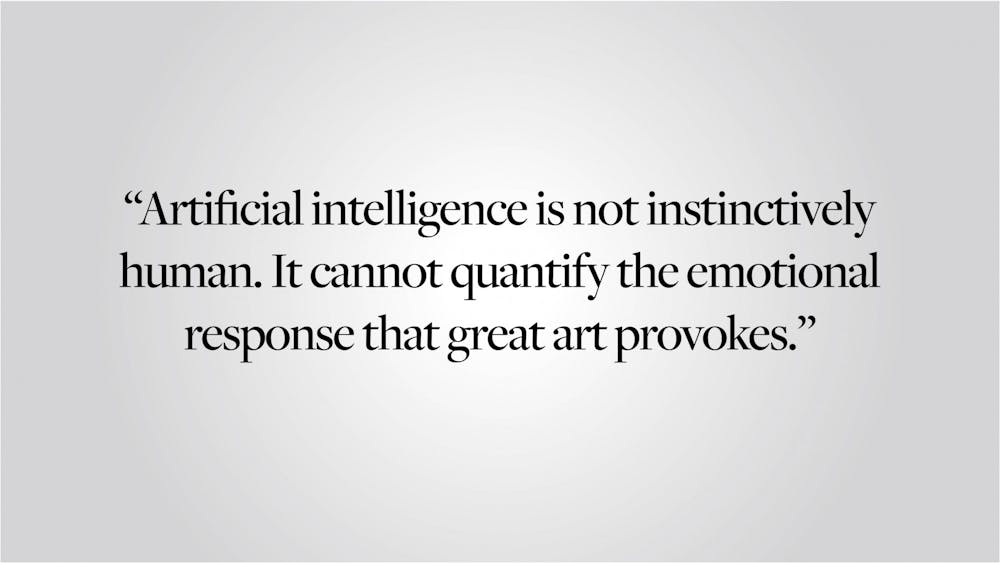In March of last year, several obliviously normal weeks before the COVID-19 lockdown, I walked into what would be my last in-person record label meeting. Instead of receiving notes on my work from a familiar group of legal pad-doodling millennials, I was met by Sony’s new AI analysis tool — which analyzes songs and determines which are most likely to be hits. HitWizard, as the engine is called, scans the waveforms of a song, using metrics like the tempo and the number of times a chorus is repeated to determine its commercial viability. It predicts hits with an accuracy of 66%. “It’s still in beta, but it’s the future. All the major labels are using it,” said Lucy, the chief doodler.
I was taken aback. How are a few lines of code expected to capture the intricacies of the artistic process?
My issue with Lucy’s decision to use HitWizard does not lie in her desire to release a hit song — at the end of the day, she was simply doing her job. My hesitancy is that the use of objective metrics in song selection implies that a successful record must follow a predetermined template, a template which the algorithm defines solely by comparing inputted music against previously successful songs. The best works, however, transcend AI’s narrow constraints as they are incompatible with the fluidity of art. Machine learning is incapable of capturing the value of future artistic innovation as it strictly relies on what already exists.
Broadly speaking, art is not commercially successful when it checks off a list of empirical traits, but rather when those traits mix together, like a great recipe, sparking an emotional response in the consumer. Those songs are that 34% that slip past the HitWizard. And they are the most advanced form of art.
AI’s reach into the arts mirrors a similar societal trend of digitizing our previously analog tasks. This application, however, is no longer confined to predicting next month’s TikTok hit. AI has recently been adopted by the tech-crazed sphere of non-fungible tokens, where algorithms are used to commodify works, further distancing art from its most human aspects.
In July of this year, contemporary artist Damien Hirst released his first NFT collection, consisting of 10,000 unique dot paintings. Although no two works were identical, all 10,000 pieces were largely indistinguishable combinations of primary-colored dots. Despite their similarity, prices for the works vary. In the same day, one painting from the collection sold for $32,000, while another closed for a record high of $43,000. Why were these nearly identical works selling for a 35% price difference?
Heni, where the works are traded, used machine learning software to price Hirst’s work. The software scans paintings for features like paint drip, dot overlap, and density, ranking each painting in the series based on these features. Consequently, works with the most extreme rankings fetch the highest prices. For example, a painting which ranks fifth out of 10,000 in “drip” is valued higher than one which falls somewhere in the middle of the pack.
This application of AI reduces artworks to collectibles. Rather than someone paying top dollar for a piece based on emotional connection, they pay for its rarity. It would be difficult to contradict the notion that both fine art and NFTs have some inherent collectible appeal. However, in most cases this collectability is paired with artistic impact in creating a work that exceeds a valuation solely based on that rarity. Hirst’s model of AI evaluation, while visionary in its own right, makes collecting art no different than collecting rare coins. It removes the magic of great art — the intangible combination of elements that moves us uniquely as humans.
Recent AI efforts like these play into society’s seemingly insatiable crusade to digitize our most humanistic roles, taking algorithmic lens to those art forms that require a human touch. The push can result in societal benefit — automating high risk factory jobs, making roads safer with self-driving cars, even processes we take for granted like e-mail. However, artificial intelligence is not instinctively human. It cannot quantify the emotional response in people that great art provokes. And it has no place in claiming accuracy in its judgment of art.
AI and art are like oil and water — they were never meant to mix.





